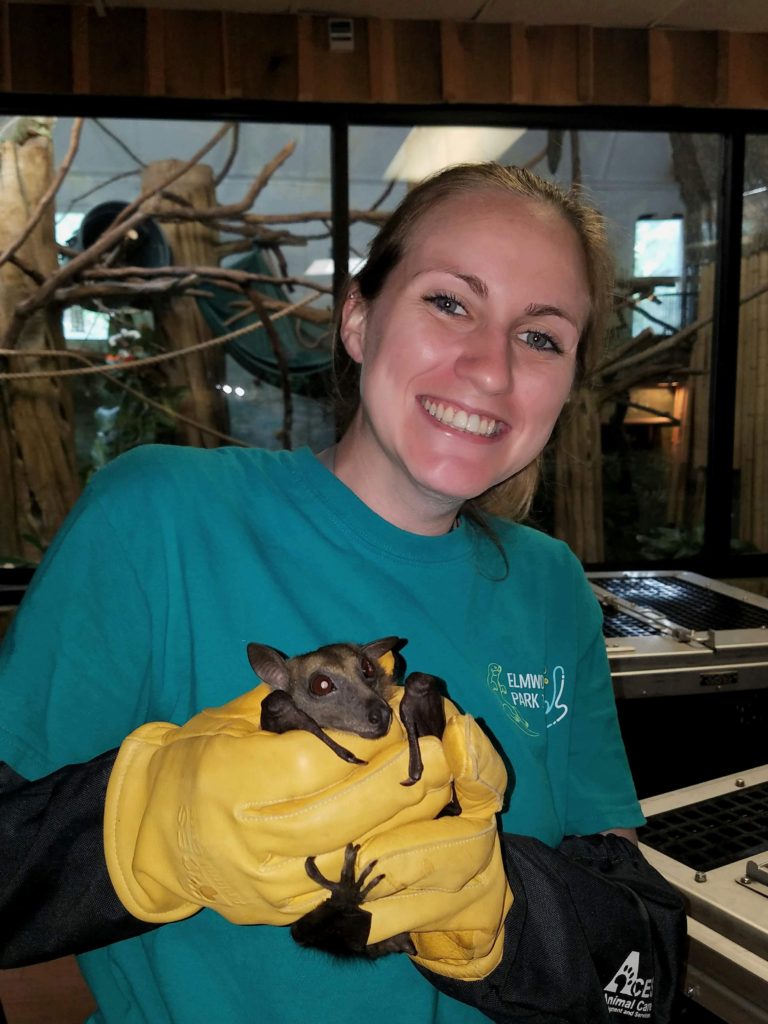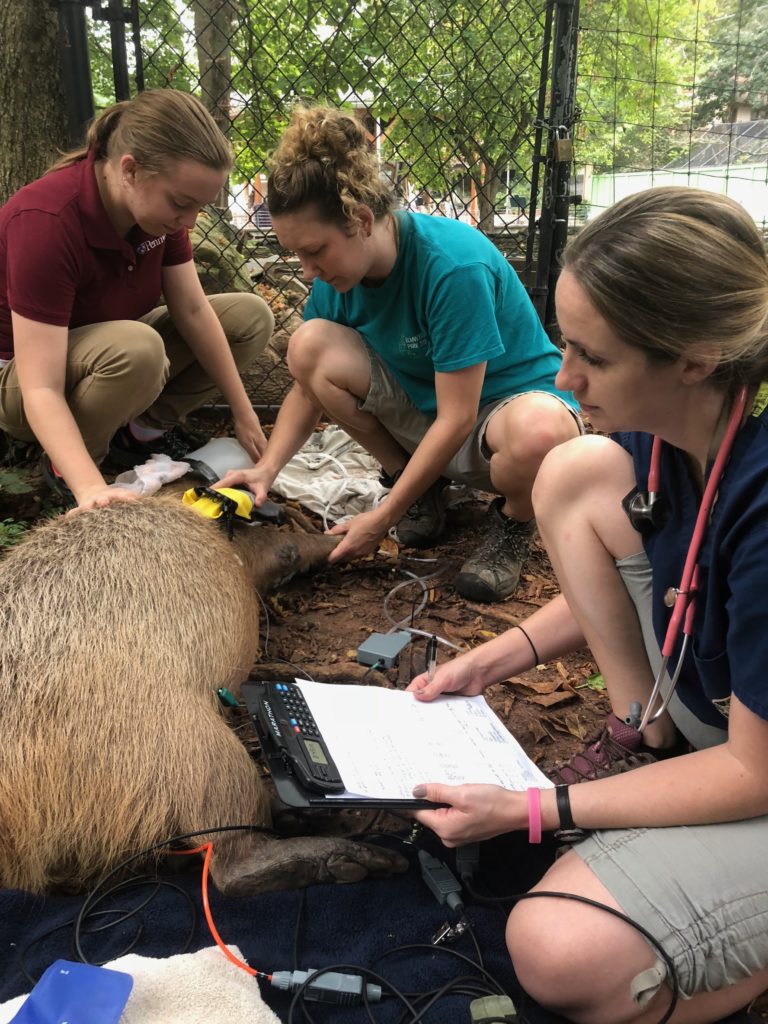
One question I get asked often is: “How do I become a zoo vet tech?” I wish I could tell you that there is a college program called “Zoological Veterinary Technology” and once you graduate, you pick the zoo you want to work at and voila! Unfortunately… it’s not quite that simple. A big part of getting into the zoo field is being in the right place at the right time. But don’t worry- what I can tell you is the steps to take if you think being a zoo vet tech is the right career path for you. Your first step is enroll at a college with a Veterinary Technology program. You can find a list of AVMA accreditted schools here.
Depending on whether you get an Associate of Applied Science degree or a Bachelor of Science degree, vet tech school will take you somewhere between 2 and 4 years to complete. Once you graduate from school, you will have to take the national board exam in order to become licensed. Now, this is where most people want to start their career at a zoo. However, you probably won’t be quite ready yet! While you do get the chance to learn about a lot of different species of animals in school, there aren’t programs specifically for zoo medicine. Chances are, you will have 3 or 4 classes that pertain to birds, reptiles and small mammals. The best advice I can give you is to get started at a dog and cat hospital. You can work at a general practice, a specialty or referral hospital or even in shelter medicine. The point is, you need to put all that schooling to the test and learn how to apply what you learned in school to real life practice! You will want to become familiar with different diseases, diagnostic testing and treatment options. There is an abundant amount of information available on cats and dogs, so you want to soak up all the knowledge you can working with them.
A veterinary hospital is also a great place to practice your clinical skills. Trust me, you’ll want to feel comfortable drawing blood from a dog before you try to draw blood from a Golden Lion Tamarin! You will have many more opportunities for skills like placing intravenous catheters, monitoring anesthesia and assisting in surgery at a busy small animal hospital. You won’t get the opportunity to “practice” these skills at a zoo; if you are working on a North American River Otter and need an IV catheter, you had better know how to place one!
The hardest part is getting your foot in the door at a zoo. Take any opportunity you can! I started as a volunteer before I got hired as an educator at a zoo. Neither of these has much to do with veterinary medicine, but I did learn how to take care of different animals and how zoos operate. Experience is invaluable. I would also recommend you join the Association of Zoo Veterinary Technicians (AZVT) and check out their website. There, you can find zoos that offer zoo vet tech internships, (but be prepared that most of these internships are unpaid) and you will also find information on AZVT’s annual conference. If you can, attend the conference and talk to zoo vet techs from all over the country. Get to know them and ask them about their internship programs. You are much more likely to be chosen for an intern spot if they have met you in person. Plus, the conference is a lot of fun! A different zoo hosts it each year and part of the conference is a day at the host zoo. All of the lectures and discussions are also about zoo medicine, and some of them are really interesting. One of the lectures from this year talked about how to manage pain with opioid patches on snakes!
The most important thing to remember when wanting to join this veterinary niche is patience. It takes patience and perseverance to break into zoo medicine, but it is an incredibly rewarding career. I love working with animals that some people have only ever seen on television, or read about in books. I feel like the work I do is important. I am able to use the information I gain by taking care of the animals at Elmwood Park Zoo, to help their wild counterparts around the world, and that’s pretty incredible.

Written by Vet Tech Kourtney Conti

